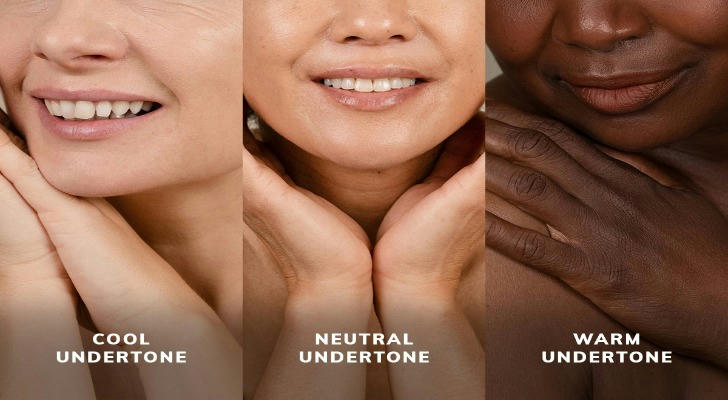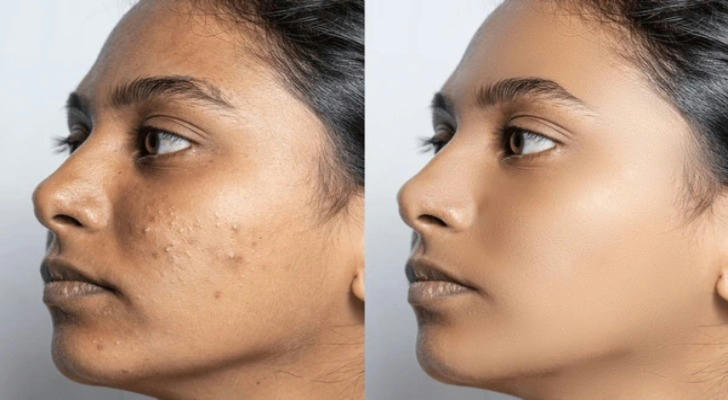Skincare in a Multicultural America: Tailoring Routines for Every Skin Tone and Type
The United States is a culturally diverse country, with different ethnic groups having different skin tones and skin qualities, and these differences affect people's demand for skin care. Dark skin is prone to pigmentation, light skin is more prone to sunburn, and Asians often have uneven skin tones. This means that skin care is not a "one-size-fits-all" approach, but needs to be tailored to the skin. This article will explore the skin characteristics, common problems and corresponding care methods of different skin colors from a scientific perspective, and combine real cases to help you find a skin care solution that is more suitable for you.

Ⅰ. Skin characteristics and common problems of different skin colors
1. Dark skin (such as African Americans)
Main features: Contains more melanin (true melanin), and is naturally more resistant to ultraviolet rays. But this also means that once inflammation occurs (such as acne, scratches), pigmentation and scars are likely to occur.
Common Problems:
PIH (Post-Inflammatory Hyperpigmentation)
Dry surface, oil accumulation in the bottom layer
Concave and convex scars or keloid constitution
Care suggestions: Choose mild but effective skin rejuvenation ingredients, such as low-concentration fruit acid or niacinamide, and adhere to sun protection. Avoid over-cleansing to avoid irritating the skin and causing rebound oil production.
2. Light skin (such as Nordic)
Main features: Low melanin content, sensitive to light, easy to sunburn; thin skin, and obvious microvessels.
Common Problems:
Easy to sunburn and photoaging
Red blood streaks and sensitive reactions
Rapid drying and peeling
Care suggestions: Daily sun protection must be adhered to for a long time. It is suitable to use ingredients that are mainly soothing and repairing, such as Centella asiatica, ceramide, hyaluronic acid, etc. Avoid high concentrations of active ingredients, pay attention to moisturizing and barrier protection.
3. Yellow skin (such as Asians)
Main features: Sebaceous glands are active, and the T-zone is prone to oil production; they are more sensitive to pigment changes.
Common problems:
- Dull skin, uneven skin tone
- Acne, large pores
- Prone to spots (freckles, melasma)
Care suggestions: Choose products containing antioxidants (such as vitamin C, green tea extract) to improve dullness. Use oil-control ingredients such as salicylic acid in moderation, and avoid excessive cleaning to damage the skin barrier. Regular work and rest are also very important.

4. Mixed and intermediate skin tones (Latinx, South Asians)
Main features: Skin tones are mostly in the medium to dark range, with a strong melanin reaction; affected by genetic diversity, the skin quality span is large.
Common Problems:
Spots (especially melasma)
Dark marks left after acne
Local dryness + local oiliness coexist
Care suggestions: Based on the principle of "zoning management", different strategies are adopted for different parts. For example, oil control on the forehead and moisturizing on the cheeks. Using highly stable skin-lightening ingredients (such as tranexamic acid) is more suitable for long-term spot lightening.
Ⅱ. Case analysis: The skin care adjustment journey of real users
Case: Maya (28 years old, African-American woman, living in Atlanta)
Maya has been troubled by acne marks and uneven skin color for a long time. She has tried many acne removal products but they are ineffective and aggravate skin irritation. At the suggestion of a dermatologist, she began to use low-concentration salicylic acid for cleansing, plus essence containing niacinamide, and focused on strengthening sun protection. After three months, her skin color was obviously even and the acne marks were also much lighter.
Her summary: "It's not that the stronger the effect, the more effective it is, but I have to 'prescribe the right medicine' for my skin type."

Ⅲ. Scientific skin care principles under multiculturalism
No matter what your skin color is, there are several common principles for effective skin care:
Know your skin type Oily? Dry? Mixed? Understanding the basic properties is the first step in choosing a product.
Pay attention to the impact of lifestyle Diet, sleep, mood, and air quality can all affect the condition of the skin.
Adhere to sun protection All skin colors need sun protection. Although dark skin is not easy to sunburn, it is more likely to darken.
Respect cultural and individual differences Skin care is not only physiological care, but also part of cultural identity. For example, some ethnic groups pay more attention to natural ingredients or plant extracts, and skin care should respect this preference.
Ⅳ. Conclusion
In the United States, where multiculturalism blends, skin care cannot copy the thinking of "one formula fits all". Every skin color and skin type deserves to be understood and respected, and a truly effective skin care program must be based on scientific knowledge and individual differences.
Skin care is a journey of dialogue with yourself. Understanding your own skin is the first step to respecting yourself and expressing yourself. In this diverse country, every face should not be ignored, and every skin color deserves to be cared for.
